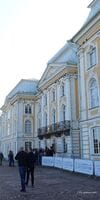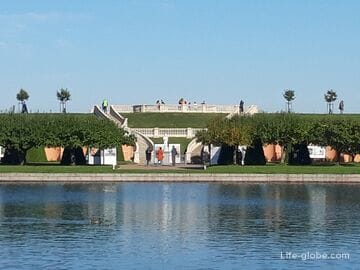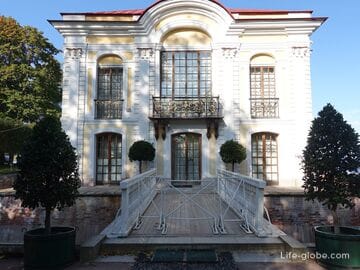The Grand Peterhof Palace (Grand Palace in Peterhof or the Petrodvorets) is a majestic and elegant palace that is one of the most famous and visited in St. Petersburg.
The construction of the palace began under Peter I. The site for the construction of the palace was chosen by Peter I himself, who also created the original appearance of the palace. The main design of the palace was developed by the architect I. F. Braunstein and architects J.-B. Leblon, N. Michetti.
The first stage of the construction of the palace took place in 1715-1725. Initially, it was a small two-story building, made in the style of "Peter's Baroque". Then the palace was called the Upper or Upper Chambers, which served for receptions and various holidays.
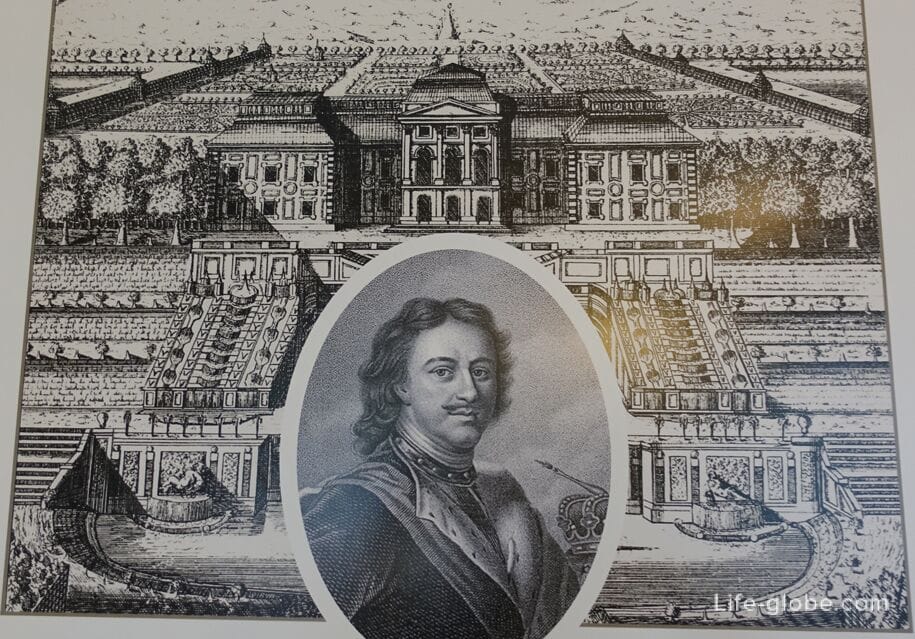
In 1732, two galleries were added to the palace according to the project of M. Zemtsov. But still, the modest at that time Petrovsky Palace no longer met the splendor and luxury of the Russian court of that era, and also did not accommodate the desired number of guests at receptions, banquets and holidays.
Extensive transformations of the palace took place at the behest of the Empress Elizabeth Petrovna (daughter of Peter I) in 1745-1755. The building was transformed according to the project of Bartolomeo Francesco Rastrelli, who took Versailles (France) as a basis and executed the Peterhof Palace in the style of mature Baroque, which is also called Elizabethan Baroque. In addition, Rastrelli, at the will of Elizabeth Petrovna, preserved the walls of the Petrovsky palace, embedding them in a new environment. In the palace there was another floor, the central space was significantly increased, which was joined by the wings of one-story galleries, completed with side buildings - the Church (from the east) and the Building under the Coat of Arms (from the west side of the palace). Rastrelli also changed the interior of the palace in the appropriate style, which shone with luxury: the walls of the halls were decorated with gilded carvings and numerous mirrors, which gave the impression of endless perspectives and visually enlarged the rooms.
The following changes occurred under Catherine II and Nicholas I:
- by order of the Empress Catherine II, the architect Yu. M. Felten decorated some rooms of the palace (the Dining Room, the Throne Room and the Chesmen Hall) in the then fashionable style of classicism; and J.-B. Vallin-Delamotte in 1766 - 1767 created two Chinese offices in the palace;
- In 1846, by order of Emperor Nicholas I, in the east wing facing the Upper Garden, the architect A. I. Stackenschneider built the third floor and created eight interiors on the occasion of the marriage of the Emperor's daughter Olga Nikolaevna with Prince Karl of Württemberg. Since then, the eastern wing has been called the Olginsky half of the Grand Peterhof Palace.
During its history, the palace served not only as the summer residence of the Imperial family, but also hosted lavish lunches and dinners, balls, holidays and various events, including business meetings.
In 1917, the palaces and the surrounding parks became a museum. The first tour of the palace took place in the spring of 1918.
During the Great Patriotic War, the Grand Palace was destroyed. Then it was restored according to drawings, materials and technologies of the 18th century. In May 1964, the first revived palace halls were opened.
Today, the Grand Peterhof Palace is a pearl of history and Baroque style. The palace appears as it was created by the architect Bartolomeo Francesco Rastrelli in the 18th century; and the original stone chambers of Peter I, built on another floor and changed their stylistic appearance-this is the center of the current palace.
The facade of the palace stretches for 300 meters along the terrace. The palace occupies a dominant position in the composition of the ensemble, which also includes Upper Garden and Lower Park.


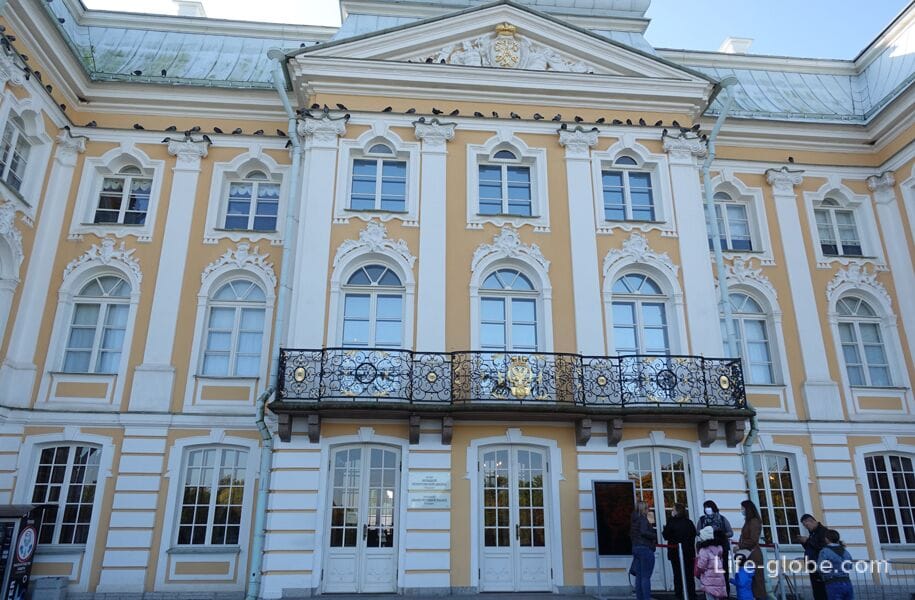

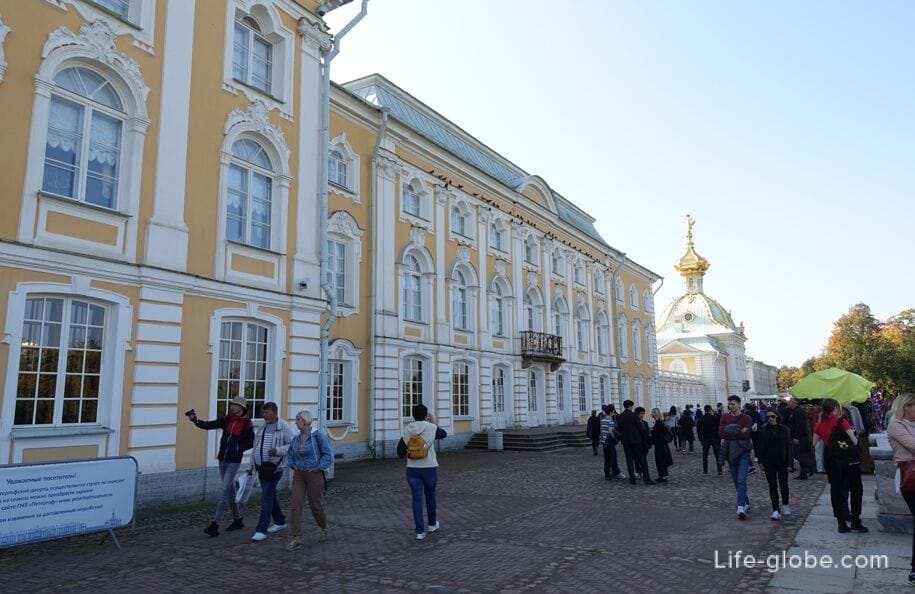
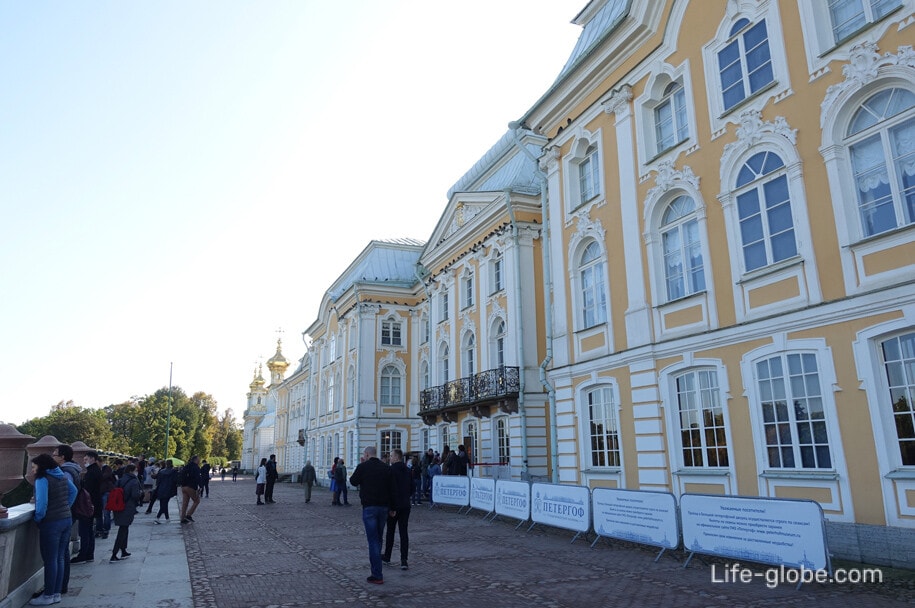
View of the Grand Peterhof Palace, the "Grand Cascade" and "Samson" fountains» from the terrace of the Lower Park
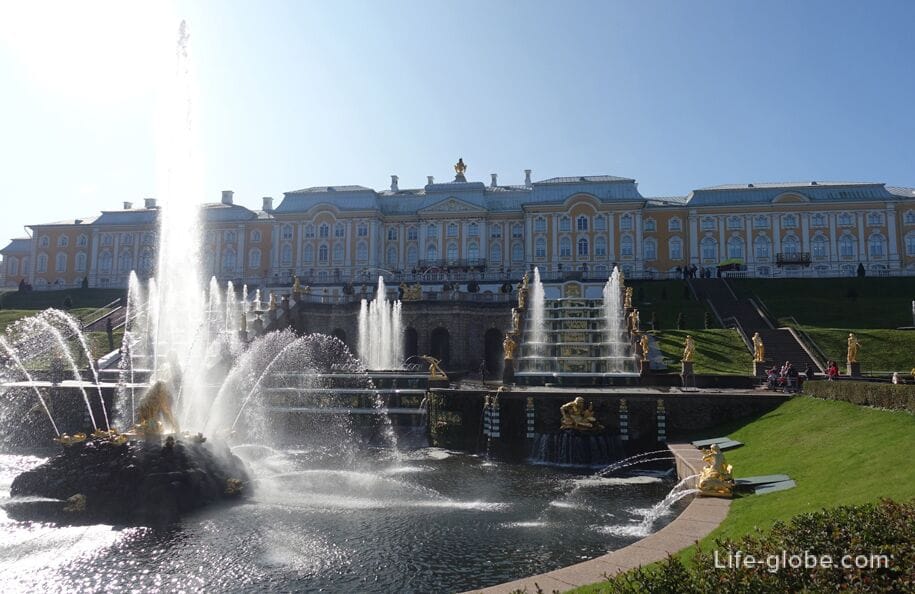
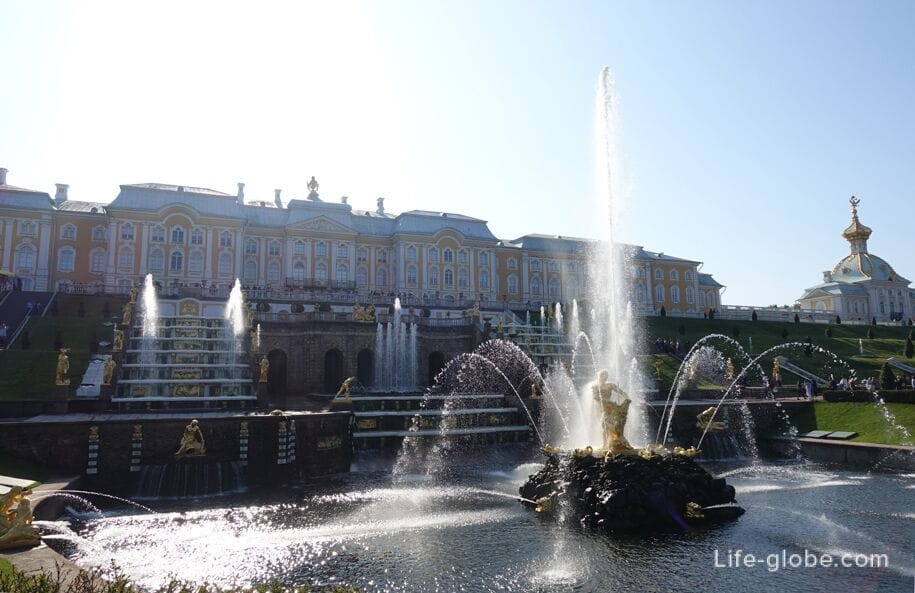
View of the Court Church of Peter and Paul - the eastern side of the palace

View of the Building under the coat of arms - western side building of the palace
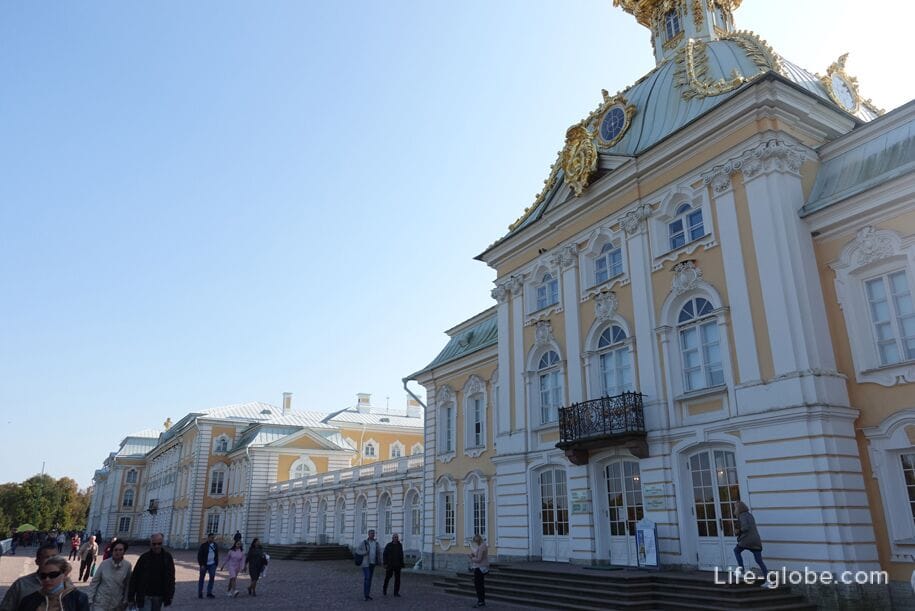
The interior spaces of the Grand Peterhof Palace (museums)
Today, the Grand Peterhof Palace is a museum, and, together with the Upper Garden and the Lower Park, is part of the complex of the Palace and Park Ensemble "Peterhof" in Peterhof (St. Petersburg).
In the palace you can visit some rooms-museums: the halls of the Peterhof Palace, a special storeroom, the Church Building and the fountain Museum. Visiting each of the museums is possible for a fee.
Halls of the Peterhof Palace
Although the Peterhof Palace looks impressive and wide from the outside, when you get inside, you actually see that it is quite small and narrow.
In total, there are about 30 halls in the walls of the palace, among which there are magnificent state rooms decorated with mirrors, parquet, stucco, "gold" and paintings; as well as the grand staircase, the Throne Room with a throne chair, the memorial hall, the picture hall, offices, reception rooms, dining rooms, the private chambers of the imperial family and a small sculpture gallery of the palace, where an authentic collection of sculptures from the 18th century is presented.
You can visit the halls of the Grand Palace in Peterhof as part of an organized tour that is regularly held around the palace.
When visiting the halls of the Grand Palace, guests can walk through the restored halls of the former Peterhof Palace, while learning the history of the palace and seeing some decorative and applied art, furniture and works of sculpture and painting located in the halls of the palace museum. Read more about the halls of the Peterhof Palace with photos…
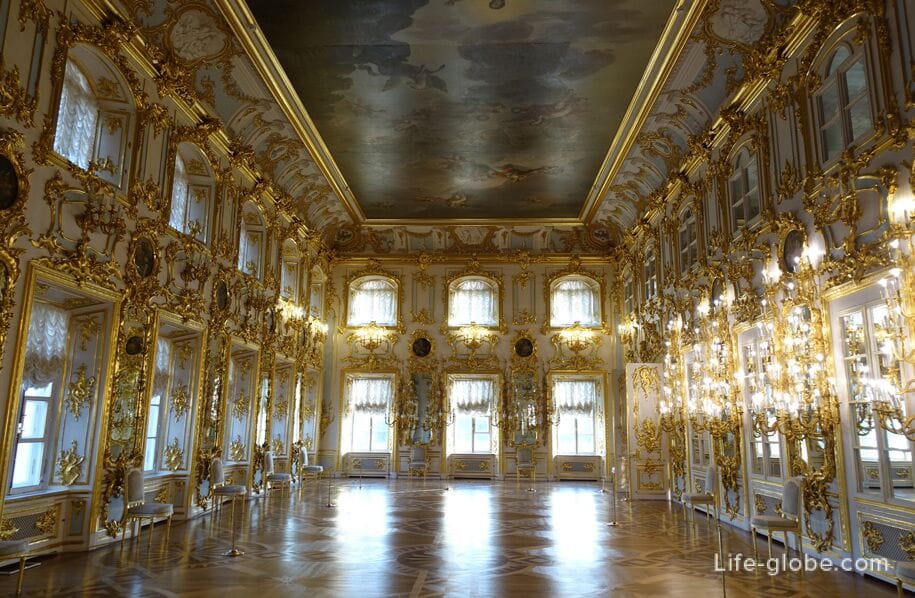
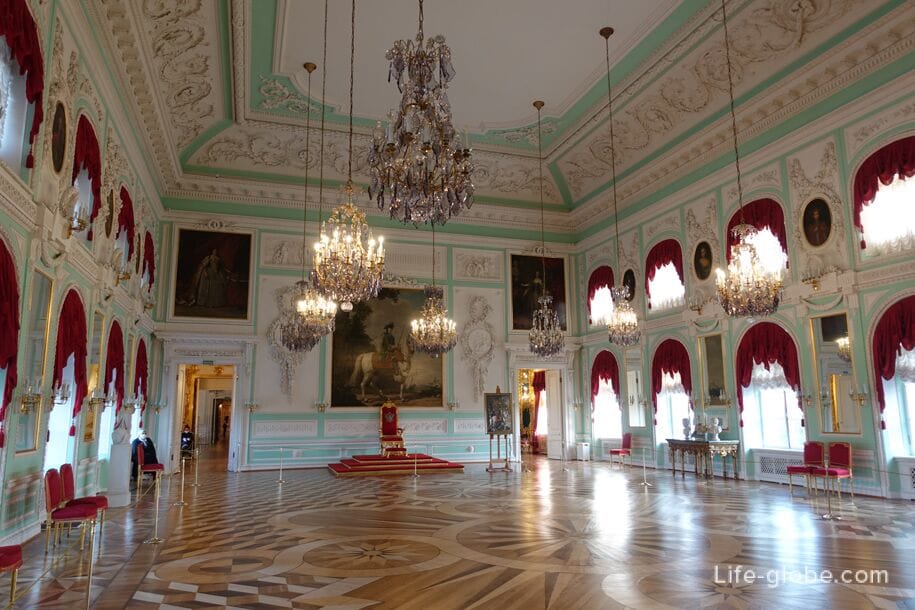
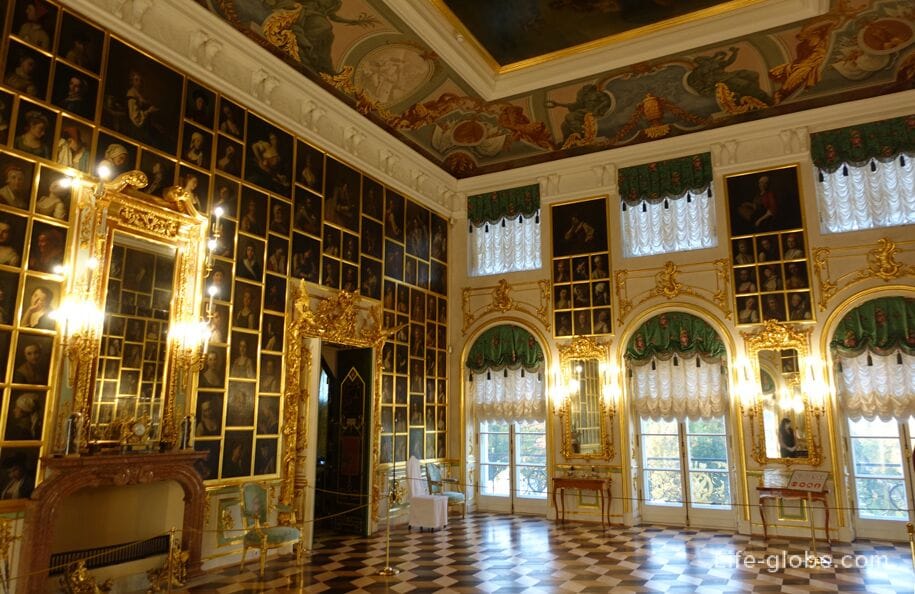
Church building
The church building, which served as the court church, was created in 1747-1751 by the will of the Empress Elizabeth Petrovna and the project of F.B. Rastrelli.
The church was consecrated on September 10, 1751. She occupied the eastern building of the Grand Palace, which was crowned, at the request of Elizabeth Petrovna, with five gilded domes "according to the Orthodox faith".
The court church witnessed many family celebrations of the Romanov Family. Here they married, baptized newborns, celebrated the days of the most important state and religious holidays. The final pages in the history of the church were the baptisms of four of the five children of the last Russian Emperor Nicholas II.
The building was opened after restoration work, and on July 12, 2011, it was consecrated in the name of the Holy Apostles Peter and Paul.
Today, the Church Building is an outstanding example of a religious building by the architect Rastrelli.

The church can be visited as a museum for a fee.
The interior of the building impresses with its lush and colorful decoration, which combines Orthodox traditions with the ideas of Western culture and the Baroque style: bright paintings, gilded carvings, the absence of the Last Judgment scene, and the soft and kind faces of saints embody the idea of intercession for people.
In the decoration of the Altar, Hall and Refectory there is an abundance of gold color.
The plan of the church hall is also unusual - in the form of an octagon. The dome's vault also has eight faces. It depicts the Evangelists, the apostles, and the saints.
On the 6-tier iconostasis there are 40 icons. Many saints on the icons are depicted in a state of emotional tension, expressed in poses, gestures and turns, characteristic of Baroque painting.
A small exhibition in the Refectory is dedicated to the history of the palace church.
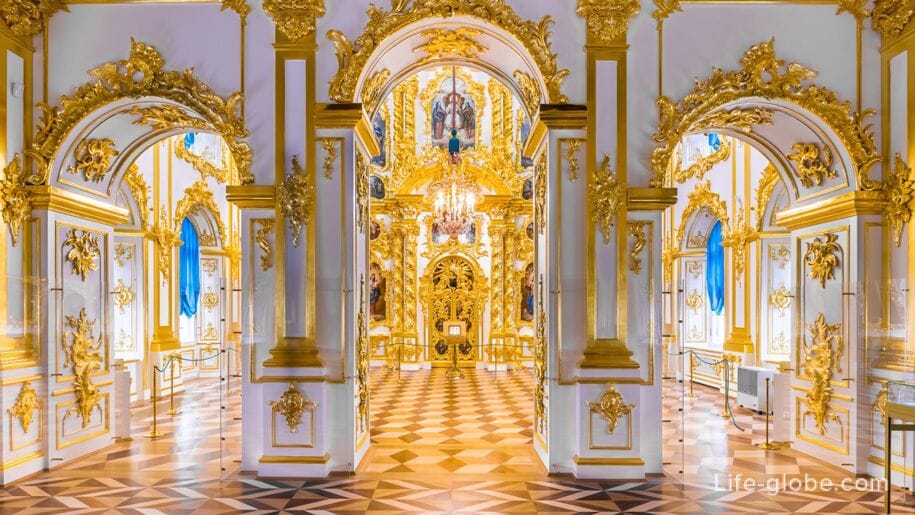
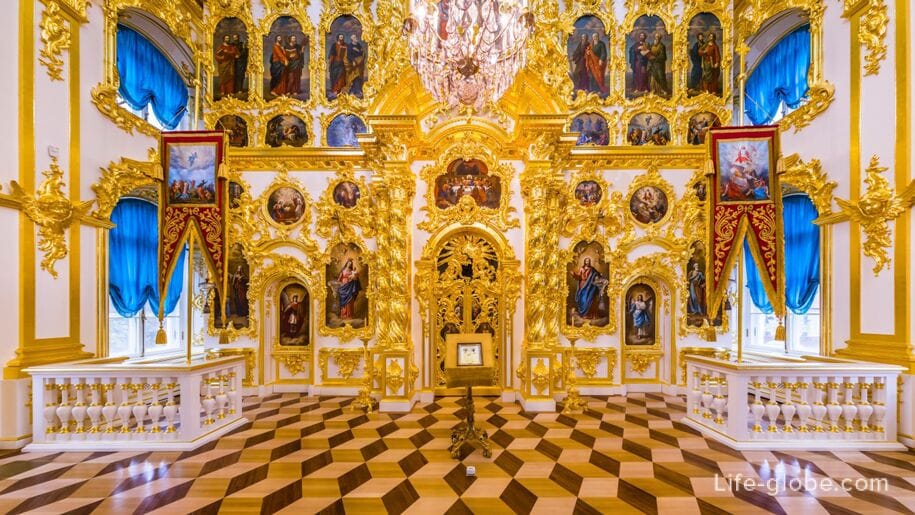
Special storage room
A special storeroom-today it is a museum located in the western wing of the Grand Palace, and you can visit it for a fee.
This wing, built according to the project of Rastrelli under Elizabeth Petrovna, was called "Buildings under the Coat of Arms" due to the fact that the dome of the building is crowned with a weather vane in the form of a heraldic double-headed eagle.
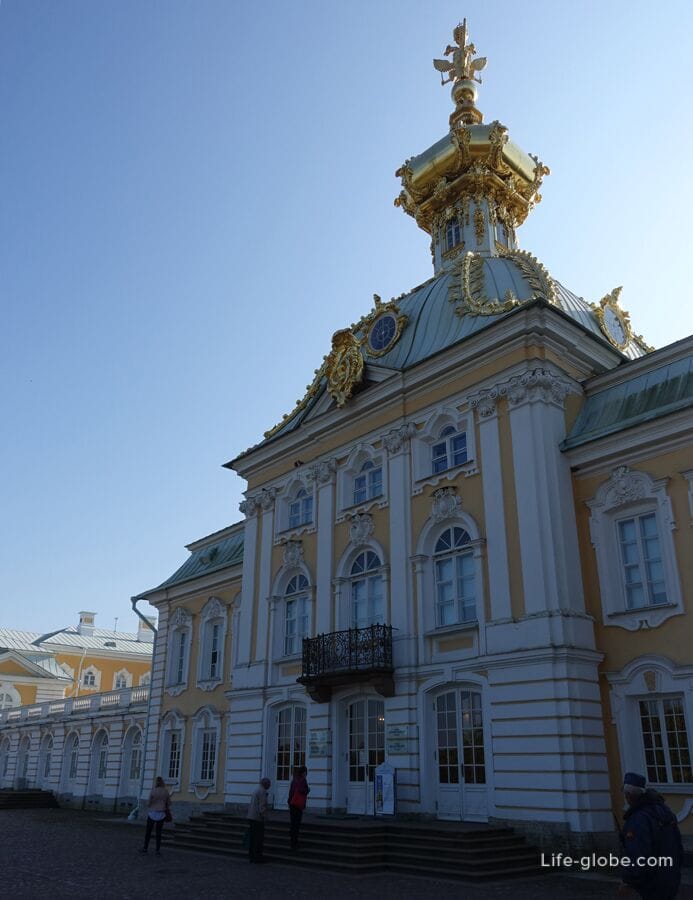
The rooms of the "Corps under the Coat of Arms" were intended for the residence of noble guests and members of the imperial family. At various times, European monarchs, crown princes and grand dukes have visited here. Empress Catherine II herself lived in the apartments of this building, and the complex of her private chambers is displayed in the current museum.
Also, from this building, the highest exits began - the solemn processions of the imperial family, accompanied by a retinue of courtiers, through the enfilade of state halls to the court church. The exits were arranged in connection with church, state and family holidays. Here, brides were also dressed in their wedding attire before the wedding ceremony. The museum contains items from the dowry of the middle daughter of Nicholas I, Grand Duchess Olga Nikolaevna, who was married in the Peterhof court church with Prince Karl of Württemberg. Babies were brought to the" Building under the Coat of Arms " before performing the rite of baptism.
In the Museum "Special treasure" presents: Church utensils; works of applied art and jewelry; clothing items, including costume of Peter I, the shoes and uniformed dress of Catherine II's uniform of Nicholas I; premium gifts that were ordered by the Imperial court of the leading jewelers (cups, snuff, brooches, cigarette cases, watches and rings with the image of the eagle or the monogram of the Emperor); desktop jeweler, where the tools of the St. Petersburg masters the beginning of the 19th century, the owner of the company "Russian enamel" And S. Britsina; products Faberge firm, decorated the palaces of Peterhof under the emperors Alexander III and Nicholas II.
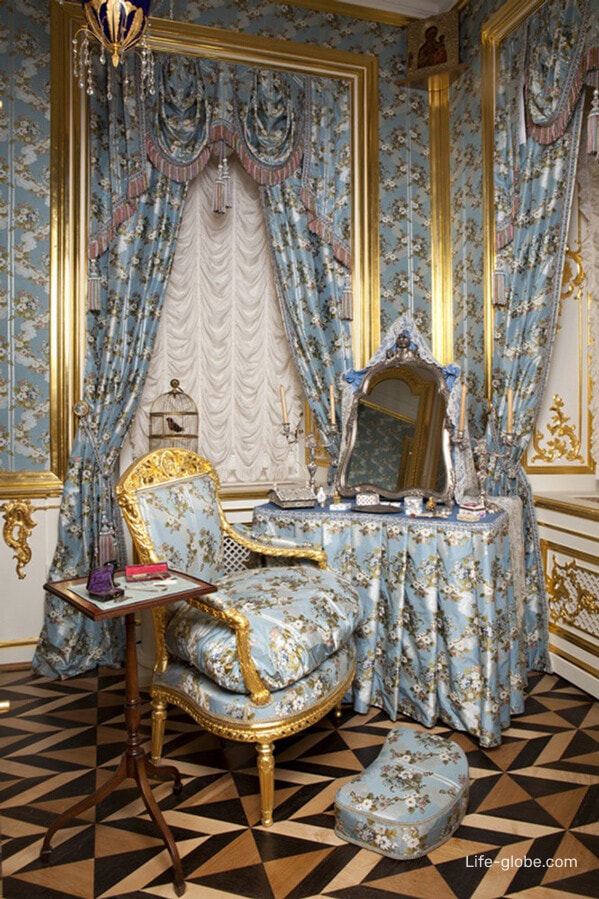
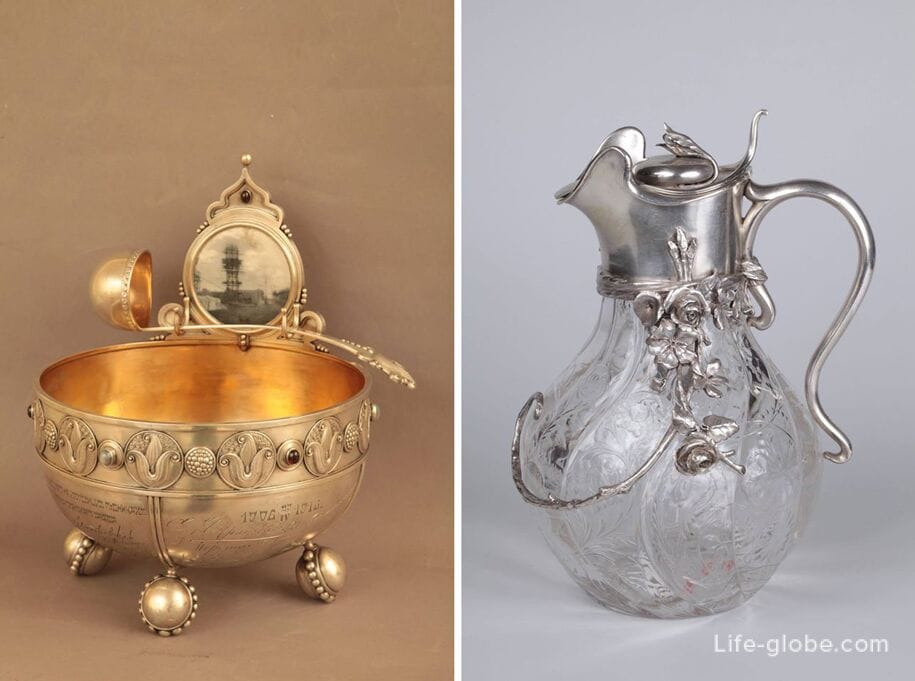
Fountain Art Museum
The Fountain Art Museum is located in the eastern gallery of the Grand Peterhof Palace. Entrance is paid.
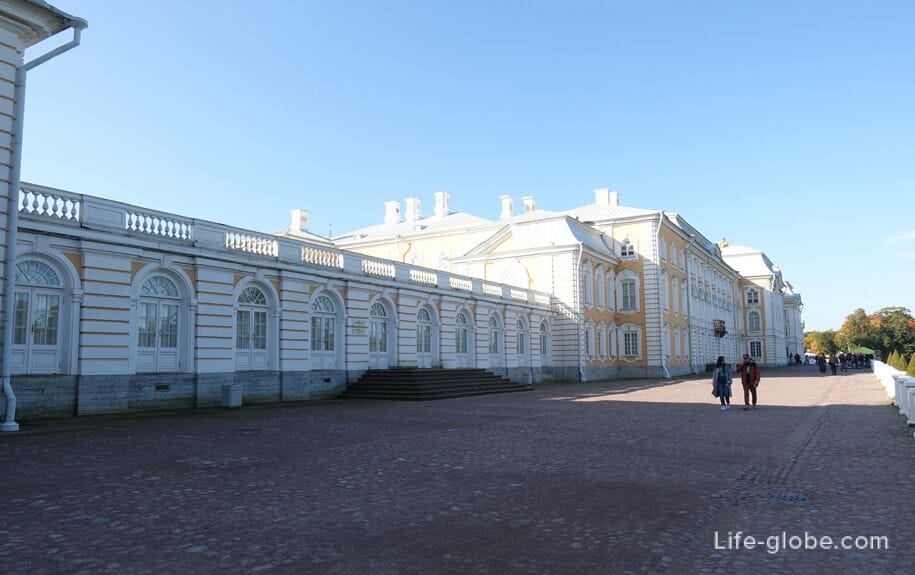
The museum's exposition is devoted to fountain art, the history of the creation and development of the water supply system of Peterhof. The exhibition of museum exhibits is combined with the use of modern multimedia tools. On one of the plasma screens, images of famous European residences alternate, visiting which Peter I decided to create a palace and park ensemble on the southern shore of the Gulf of Finland.
Also in the museum you can see images of historical buildings that have not survived to this day, fragments of wooden and cast-iron pipes of the 18th century, details of water equipment, fountain nozzles, as well as tools used by fountain masters.
The museum also introduces documents dedicated to the restoration of the fountains of Peterhof after the Great Patriotic War.
One of the museum's rarities is a plaster model of the sculpture group "Samson tearing the Lion's Mouth", made in 1947 by Vasily Simonov. This sculpture has become a symbol of Peterhof.
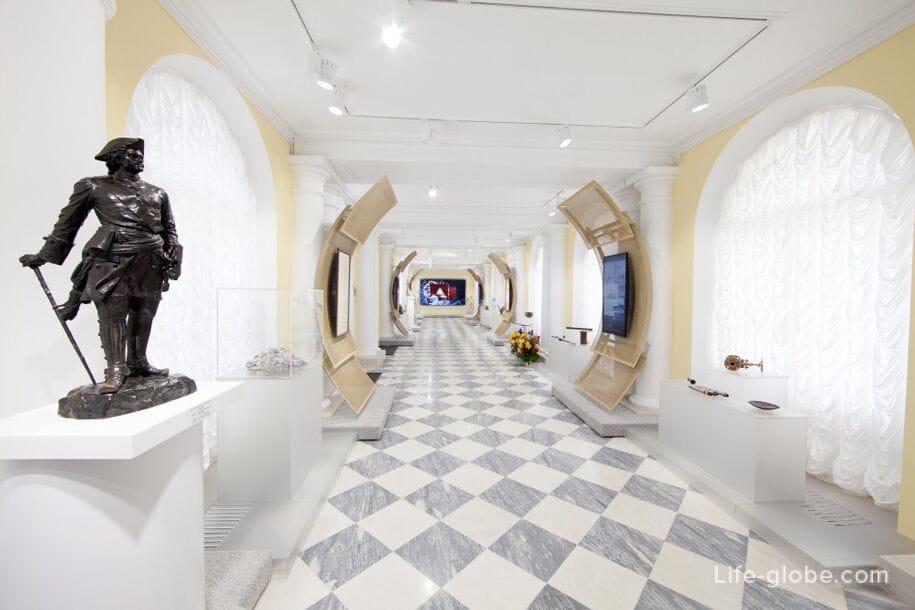
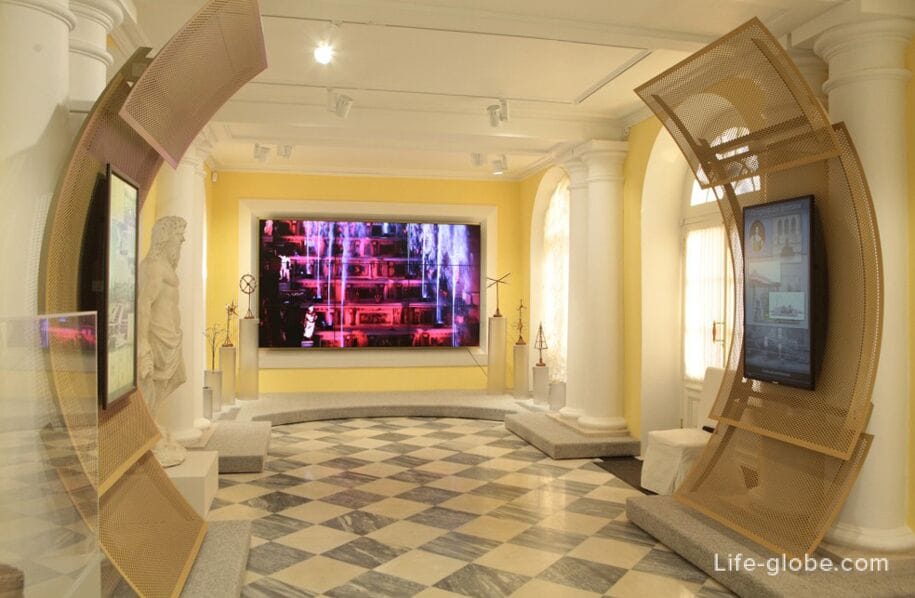
Practical information
The Grand Peterhof Palace, together with the Upper Garden and the Lower Park, is part of the Peterhof Palace and Park Ensemble and belongs to the Peterhof State Museum-Reserve.
The halls of the Grand Peterhof Palace, the Special Storeroom, the Church Building and the Fountain Museum, located in the Grand Peterhof Palace, can be visited for a fee (each object has a separate ticket). Entrances to the palace parks are also paid.
All or part of the halls of the palace may be open to the public. Some exhibits in museums may also change.
Tickets can be purchased in advance online or at the ticket offices near the palace.
The opening hours of museums, the cost of tickets, as well as the conditions for visiting and buying tickets, we recommend that you check on the official website of the State Museum-Reserve "Peterhof": peterhofmuseum.
You can visit Peterhof with one of the excursions
All the ways to get to Peterhof from St. Petersburg (the airport and the city center) can be found here →
Near the Palace and Park Ensemble "Peterhof" you can stop
The 4-star Novy Peterhof Hotel features a restaurant, bar, parking, tour desk, spa area with indoor pool, gym, steam bath, Finnish cedar sauna and aroma sauna.
The modern-style rooms at the hotel are equipped with a TV with satellite channels, free Wi-Fi, a safe, bathrobes and slippers, a hairdryer and free toiletries. Some rooms have a seating area.
The room rate can include: breakfast, breakfast + dinner or breakfast + lunch + dinner. Link to the hotel
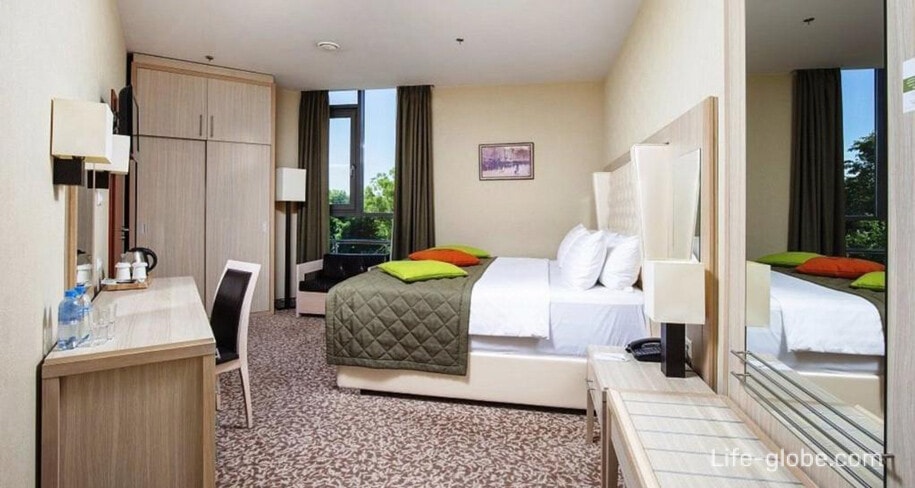
EGO-LOFT Apartment (Holgin Pond) they offer views of the lake and the city.
The apartmentfeatures air conditioning, a balcony, free Wi-Fi, a flat-screen TV, a washing machine, a bedroom, a kitchen with a dishwasher and a microwave, and a bathroom with a hairdryer and free toiletries. Link to the apartment
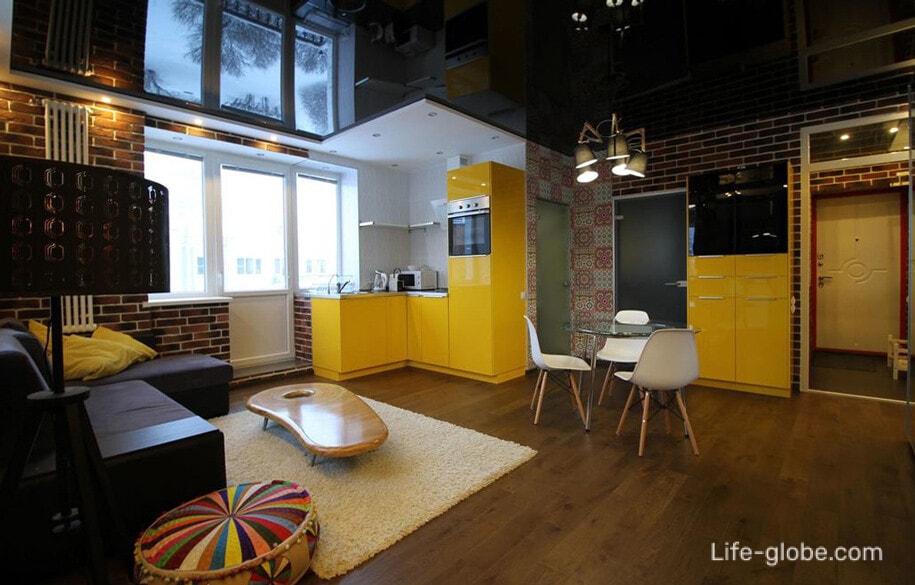
Severnaya Venezia Apartment с features a balcony with lake views, free Wi-Fi, a children's playground, a garden and a shared lounge.
The apartmentfeatures a bedroom, a flat-screen TV with cable channels, an equipped kitchen with a microwave and a refrigerator, a washing machine, and a bathroom with a shower. Link to the apartment
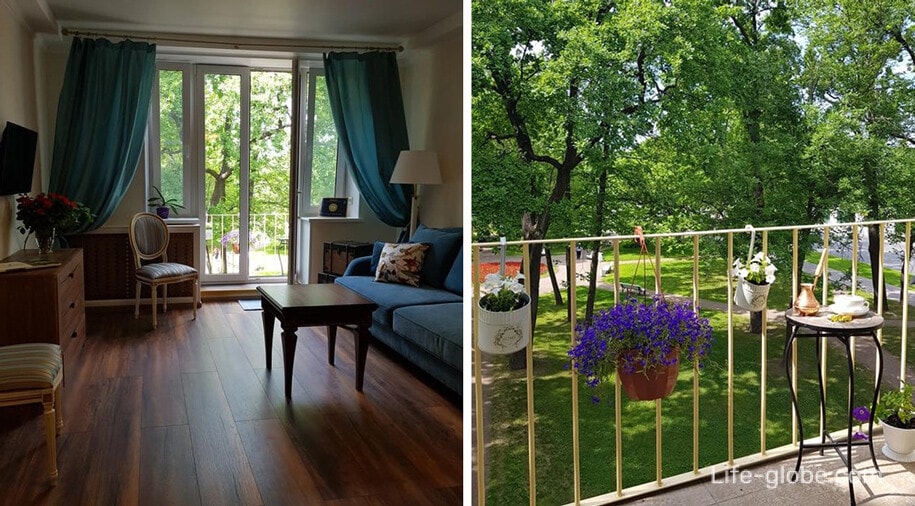
All accommodation facilities in St. Petersburg, including in the city center and in Peterhof, can be viewed and booked here




